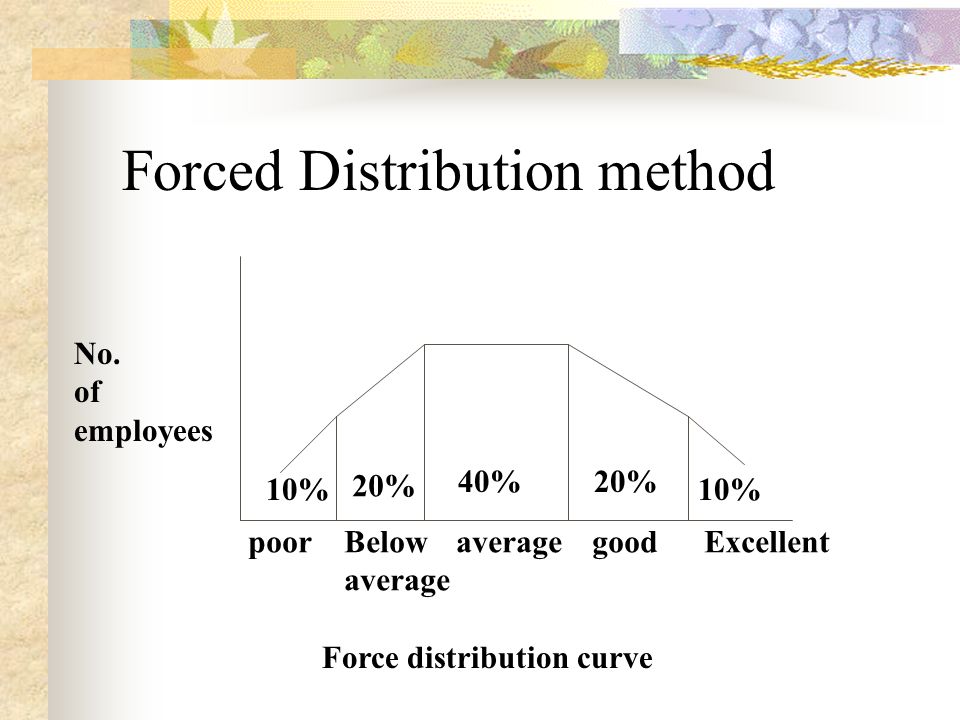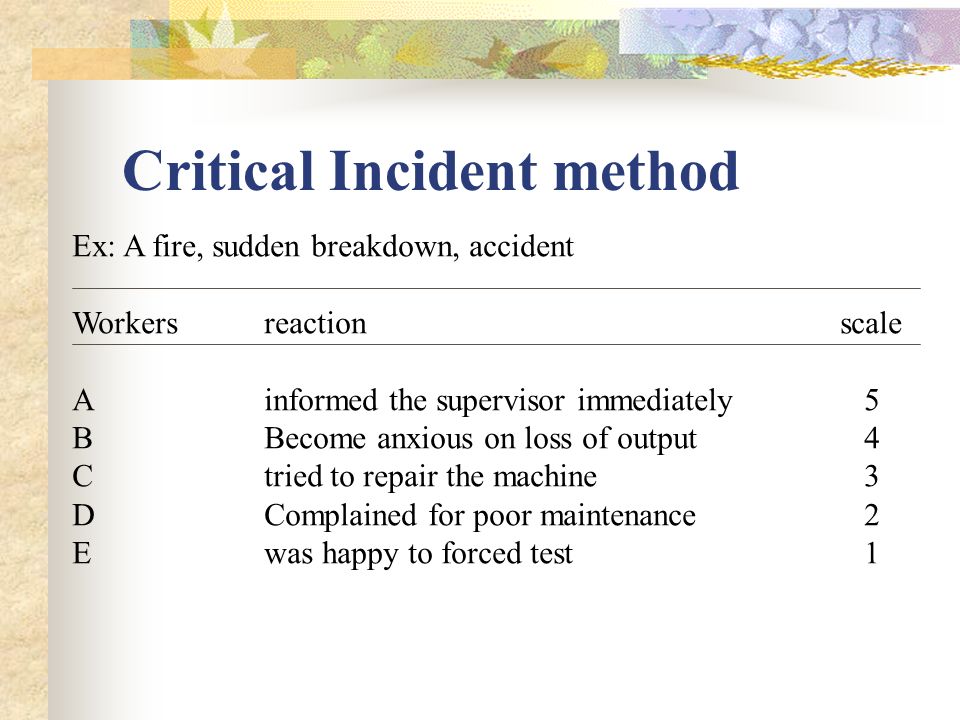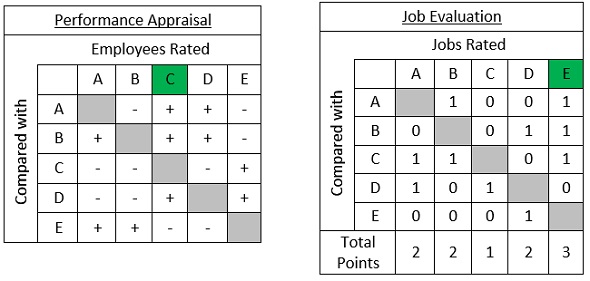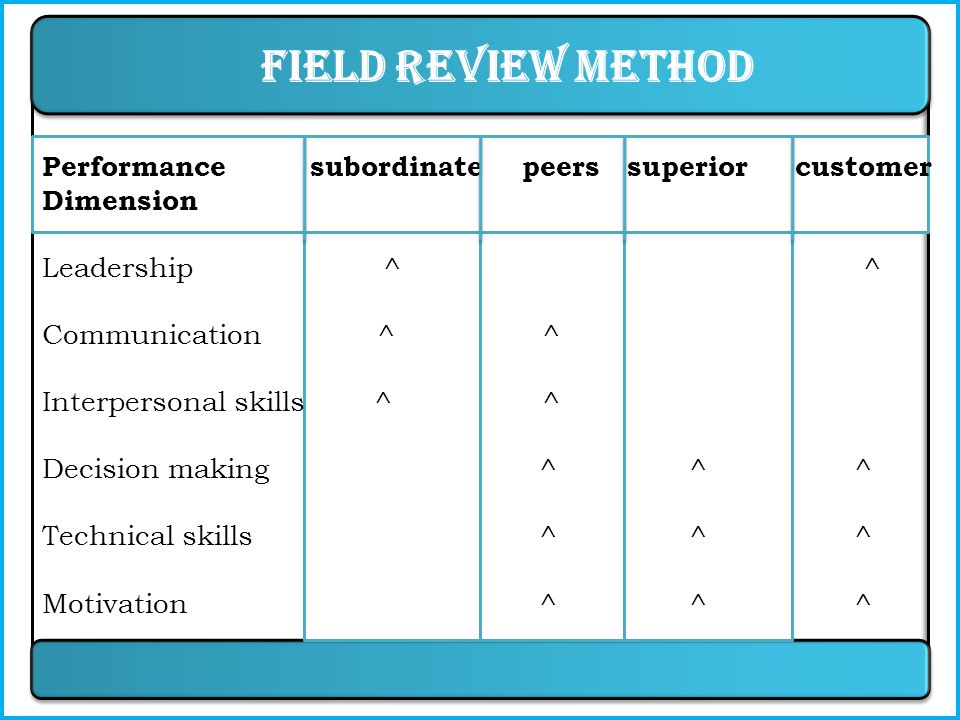Rating Scales Method:

It is one of the most used traditional methods of performance appraisal. In order to evaluate the performance of an employee, we create a rating scale against certain parameters in this method. These parameters normally include employees’ attitude, sincerity, dependability, attendance, punctuality and other interpersonal skills. It ranges from 1 to 10 wherein 1 being the lowest score indicating a negative feedback and 10 being the highest score indicating a positive feedback.
Checklist Method:
As the name suggests, in this method, we create a checklist comprising of descriptive statements related to employees’ behavior. Each statement answers in two ways, Yes & No or True or False. The evaluator can choose one of the two options which he thinks best describes the behavior of the employee.
Forced Distribution Method:
This method is very popular and mostly used in large organizations. The performance of employees varies significantly, some being more productive and some being less productive. So, the companies force their managers to distribute employees on bell shaped scale depending on their overall performance. Some of them fall into excellent zone, some into good, some into average, some into the below average and some into poor region of the curved scale.
Critical Incident Method:
This method gives emphasis on behaviors and reactions of employees in certain critical situation like handling annoyed customer, a fire break out, or any other accident. The performance is evaluated against a list of critical behaviors in this method. Let us understand it through an example:
On June 23, an annoyed customer lost his cool but the manager handled his issues. The manager was polite and patient with him resulting in solving the issue efficiently. This is a positive critical incident.
On July 27, the manager lost his cool on a clingy customer and was rude to her. This is an example of negative critical incident.
Essay Method:
This method involves descriptive review on the behavior and performance of the employee. It includes all the relevant information like employees’ attitude, job knowledge, current performance, his relationship with colleagues, needs further training or not and potential for growth.
Paired Comparison Method:
This is a one to one comparison method. The evaluator chooses one particular trait and compares one employee with the rest in pairs on that trait. The total number of pairs for comparison is calculated by the formula: N (N-1)/2 wherein N is the total number of employees to be evaluated.
Let’s say there are five employees A,B,C,D,E who needs to be evaluated. So after applying the formula, we get 5(5-1)/2 = 10 pairs to compare.
- A with B, A with C, A with D, A with E
- B with C, B with D, B with E
- C with D, C with E
- D with E
Field Review Method:
In this method, the HR specialist asks the senior employees to answer questions on the performance, behavior and skills of the junior employees. It basically depends on the superior’s opinions. The company appraises the employee on the basis of this feedback received from the superiors.
Confidential Appraisal Method:
This method is mostly to make decisions like promotion and transfer of employees in government organizations. The seniors are asked to prepare this confidential report on the performance, behavior, attitude and other traits of the employee. This report is not to be revealed to anyone and is sealed before sending it to the concerned officials who will take decisions based on this report.






